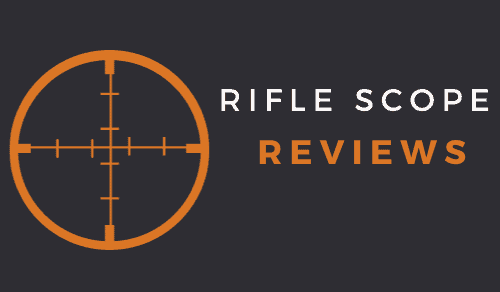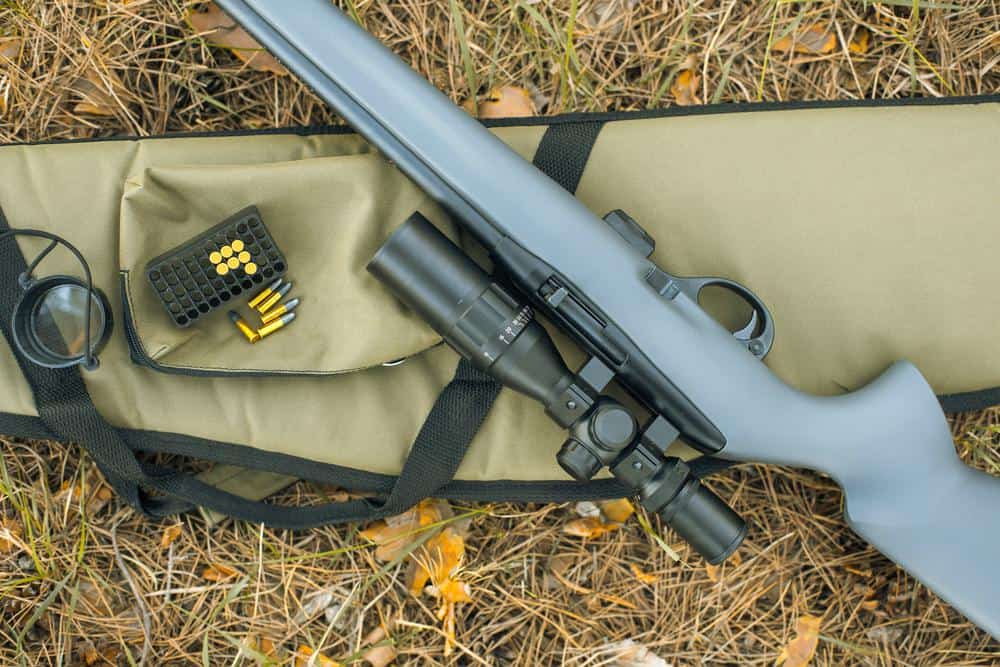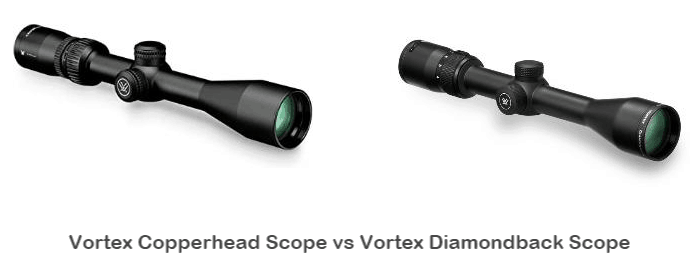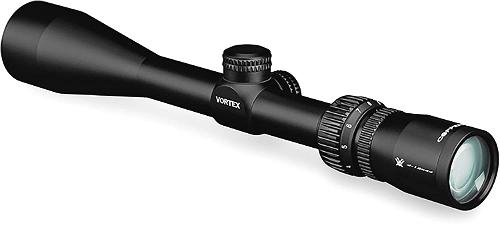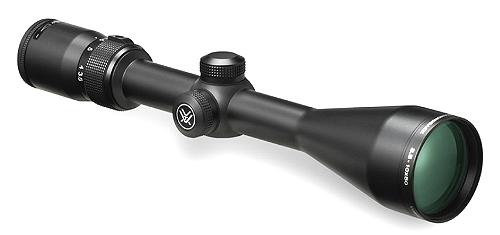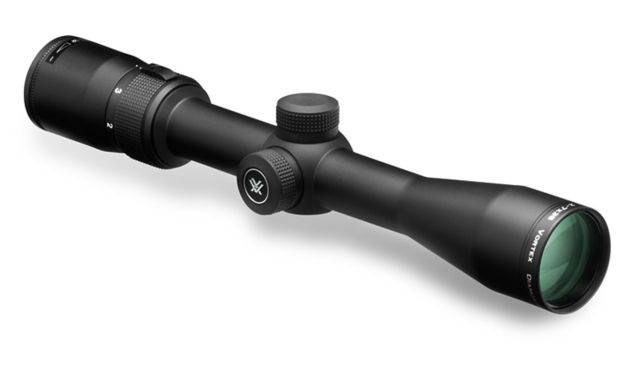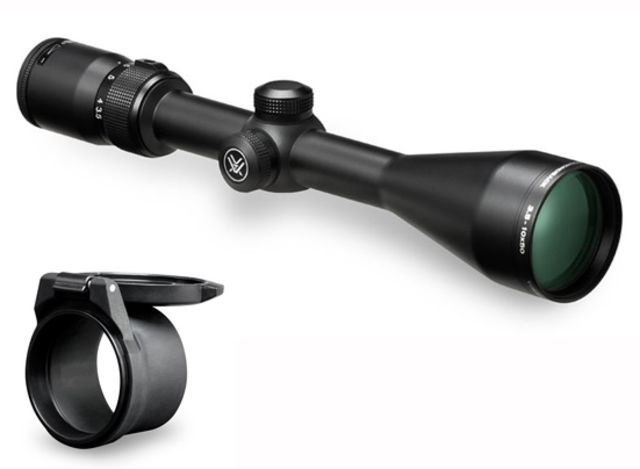As an Amazon Associate I earn from qualifying purchases. Amazon and the Amazon logo are trademarks of Amazon.com, Inc, or its affiliates.
Even though Vortex Optics has only been in business since 2002, that’s really only a short time compared to more established brands like Leupold and Redfield who have been in business for 100 plus years. During that time, Vortex has become recognized as a premier U.S.-based provider of sporting optics.
Given the popularity of Vortex, it’s not surprising that I spend a fair amount of time at my day job either answering various questions about Vortex scopes or demoing various Vortex scope models.
While I field a number of Vortex related questions weekly, one that I seem to be asked repeatedly is to compare the Vortex copperhead scope vs the Vortex Diamondback scope models
Before I get into a detailed comparison, let’s do a general overview of each of the scope series:
Vortex Copperhead Scopes
The Copperhead series of rifle scopes is part of Vortex’s entry-level scope family within the Vortex line of scopes. This entry-level family also includes the very popular Crossfire II series and the Sonora scope series.
Within the Vortex hierarchy of scope models, the Copperhead is one step ahead of the Vortex Sonora scope family, and just below the extremely popular Vortex Crossfire II series of scopes.
Technically, the Copperhead series is very similar to the Vortex Crossfire II series but it’s a limited distribution series which means that only certain Vortex scope distributors can carry and sell it. The Crossfire II series also offers a few features that are not found on the Copperhead series.
The Copperhead series is primarily marketed towards hunters who are looking for an affordable rifle scope that will perform well without lightening the wallet too much.
Currently, Vortex offers the Copperhead series in two second focal plane configurations, a 3-9 model and a 4-12 model. Both models are built on a 1-inch tube, and the Copperhead only offers two objective lens diameter choices: a 40mm (found on the 3-9 model), and a 44mm (found on the 4-12 model).
Vortex Diamondback scopes
It’s important to clarify that this comparison is focused on the Vortex Diamondback scope series, and not the similar Vortex Diamondback Tactical series of scopes. The Diamondback Tactical series of scopes is the next step up from the standard Diamondback series.
The Diamondback series is only available in second focal plane configurations, while the Diamondback Tactical series of scopes offers a few models in first focal plane and one model in second focal plane.
From a Vortex hierarchy standpoint, the Diamondback scope series is the next level up from the Vortex Crossfire II scope family, and, as I mentioned before, just under the Diamondback Tactical scope series.
I would not classify the Diamondback as an entry-level Vortex series, I’d say it’s more of a lower mid-level series of scope. This series is geared towards hunters and general shooters, while the Diamondback Tactical series is really more geared towards long-range shooting.
The Diamondback series currently consists of 5 models that feature a power magnification range starting at 1.75-5x and topping out at 4-12x. In terms of tube size, all the Diamondback models are built on a 1-inch tube. From an objective lens diameter perspective, the Diamondback models start at a 32mm objective lens and top out with a 50mm model.
So, here’s a quick side by side comparison of the basics between each of the respective scope lines:
| Copperhead Scopes | Diamondback Scopes | |
| Tube Size | Only available in models with a 1-inch tube | Only available in models with a 1-inch tube |
| Power Ranges/Magnification Ranges | Only offered in 2 models: 3X9 4X12 |
From 2-7x all the way up to 4-12x |
| Reticle Options | Deadhold BDC | Deadhold BDC
V-Plex |
| Where are They Manufactured | Made in China | Made in China |
| Warranty | Vortex’s Lifetime Warranty | Vortex’s Lifetime Warranty |
| Turrets | Capped MOA Adjustments | Capped MOA Adjustments |
| Eye Relief | 3.8” – 4” | 3” – 3.2” |
| Objective Lens Diameter | 40mm 44mm |
32mm 35mm 40mm 50mm |
So, let’s get into greater detail of comparing the main aspects and features of each of these Vortex scope series:
Tube Diameter
Both of these scope series is built on a 1-inch tube. Neither series offers a 30mm tube option. While a 30mm tube offers a greater range of adjustment, the 1-inch models weigh a bit less and are very popular for hunting applications.
If you were considering either of these series for long-range shooting, I’d say that Vortex offers a number of other 30mm scope models that would be a better option for that type of shooting. These two series are really geared more towards hunting.
Glass Quality
I’ve spent some time behind both the Copperhead models and the Diamondback models, and the Diamondback has slightly better quality optics than the Copperhead.
The optical clarity and light transmission on the Diamondback series is slightly better than the Copperhead series. However, the Copperhead series uses the same glass as the Crossfire II scope series, which means it’s still pretty decent glass.
The Copperhead series does have a slight edge in eye relief, but I will get more into that topic below.
Reticle Options
In terms of reticle choices, the two Copperhead models are only available with Vortex’s Dead-Hold BDC reticle, while most of the Diamondback scope models come equipped with either the Dead-Hold BDC reticle or Vortex’s V-Plex (MOA) reticle. Some of the Diamondback scope models are available with both of these reticle options.
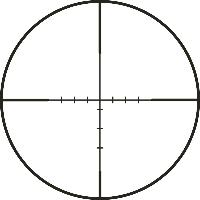 |
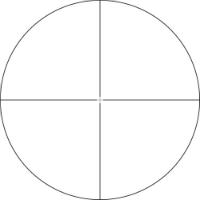 |
| Vortex DeadHold BDC Reticle | Vortex V-Plex Reticle |
I have shot with both reticles and like both. If you prefer a reticle that is geared more towards a traditional duplex, then the V-Plex is probably a better choice. If you want the option to shoot at longer distances, then the Dead-Hold BDC may be the better option.
I will say that you may have to spend some range time experimenting with the Dead-Hold BDC to really see where your particular rifle ends up in terms of the BDC functionality. While Vortex offers some rough BDC guidelines based on popular calibers and common bullet loads, your best bet is to invest the time at the range to know exactly how the BDC performs in real life.
Once you have invested the time documenting how the BDC works and at what ranges, you would be surprised how well that set-up works. Using that Dead-hold BDC set-up, I am able to make solid hits with a .223 bolt rifle out to 400 yards, which is pretty impressive given my meager shooting skills.
Eye Relief
This is an area worth discussing as there are some fairly significant differences between the two scope families in this area.
Both of the Copperhead scope models are advertised as having eye relief of 3.8” to 4” inches, which is very good for a 1-inch scope.
The Diamondback scopes series, depending on the specific model, are advertised as having eye relief of 3” to 3.2”.
So, depending on which specific model we are comparing between the two scope families, you could have an eye relief difference of nearly one inch, which is a pretty significant difference.
Having tested both the Copperhead and Diamondback series, I am very comfortable saying that the Copperhead scope series offers much longer and much more forgiving eye relief when compared to the Diamondback scopes.
While the Diamondback offers slightly better optical quality compared to the Copperhead scopes, the eye relief on the Diamondback models is not only shorter but also more critical to specific head positioning. Now, to be fair, I am probably a bit obsessive about eye relief than most shooters as I’ve always struggled to find that “perfect” eye relief.
If you don’t struggle with eye relief, then the Diamondback eye relief probably won’t be an issue for you.
Warranty
Not much to report here as each of these scope series are covered under the Vortex Lifetime warranty, which is an excellent program.
Which model do you suggest?
If you are strictly shopping on a budget and want a versatile, value-based scope, then the Copperhead series is probably the better choice.
If you are shopping based on glass quality and features, then the Diamondback series may a better choice. Obviously, the Diamondback models are a little pricier than the Copperhead models, but you’re paying for the better glass and features.
Personally, I prefer the Diamondback series over the Copperhead series. I based that opinion on the wider range of power magnifications, the additional reticle option, and the slightly better optical quality. And I say that as optical quality is more important to me compared to the minor eye relief issues.
Here are 3 of my favorite Vortex Diamondback scope models:
Vortex Diamondback 2-7X35 Rimfire Scope
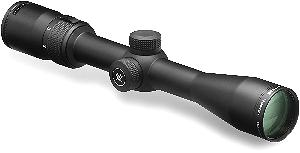 If you are looking for a scope for your rimfire rifle, and prefer something in the lower power ranges, then this Vortex Rimfire model might be worth checking out.
If you are looking for a scope for your rimfire rifle, and prefer something in the lower power ranges, then this Vortex Rimfire model might be worth checking out.
Personally, I prefer a scope with a little more magnification for my rimfire rifles, but I’ve also been blessed with terrible vision. That being said, most any scope in the Diamondback series (except for the 1.75-5X32 model) would be an excellent option for any .22 rimfire (or any other rimfire caliber).
This scope model is compact and lightweight (at 14.2 ounces) and has nice, crisp optics.
Here are some places I found it online with good prices:
Vortex Diamondback 3.5-10X50 Scope
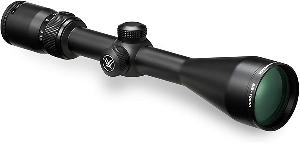 The 3.5X10 configuration is a versatile scope that can be used for almost any purpose. The power range is more than enough for most any hunting application, with the exception of extreme long-range hunting.
The 3.5X10 configuration is a versatile scope that can be used for almost any purpose. The power range is more than enough for most any hunting application, with the exception of extreme long-range hunting.
The 50mm objective lets in plenty of light and the optical quality is good even at the maximum 10X power. This model is also one that is available in both the V-Plex and Dead-Hold BDC reticle options.
Within the Diamondback scope series, the 3.5X10 may be the most popular seller, even surpassing the popular and classic 3X9 model.
Here are a few places I located with good prices on this model:
Vortex Diamondback 4-12X40 Scope
 This model is the highest magnification range that is currently offered in the Diamondback scope series. Like the 3.5X10 model, the 4-12 version is also available in a version with the V-Plex reticle and another version with the Dead-Hold BDC reticle.
This model is the highest magnification range that is currently offered in the Diamondback scope series. Like the 3.5X10 model, the 4-12 version is also available in a version with the V-Plex reticle and another version with the Dead-Hold BDC reticle.
If the 3.5X10 power range mentioned above isn’t quite enough magnification for you, then this 4-12 might be the ticket. The 4-12 power range is also versatile enough to meet almost any hunting scenario or target shooting session.
This model features a 40mm objective lens which is slightly smaller than the 50mm version on the 3.5X10 model, meaning that the 4-12 model weighs nearly 2 ounces less than the 3.5 model. In that situation, the shooter ends up getting the higher 11X and 12X power ranges in a package that is more compact and weighs less.
Here are a few good deals on the 4-12 models:
FAQS
Here are some other commonly asked questions that I have seen or heard regarding the Vortex Copperhead vs Diamondback scopes:
Between the Copperhead and Diamondback scopes, which one offers an illuminated reticle?
Unfortunately, neither the Copperhead scopes nor Diamondback scopes are currently being offered in a version with an illuminated reticle.
If an illuminated reticle is on your list of wants, then I’d take a look at the Vortex Crossfire II scope series as there are several models in that series that come with an illuminated reticle option.
Can you talk more about the Vortex Diamondback eye relief?
Eye relief is really kind of a personal thing as scope makers provide eye relief specifications that are measured in inches, but the actual real-world eye relief is really dependent on a number of factors including:
- How the rifle or shotgun is shouldered in relation to where the shooter comfortably places his or her head on the stock
- The length of pull in the stock compared to the shooter’s size
- Stock design
Because of those factors, each person ends up with their own personal eye relief for each scope.
I don’t think that the eye relief on the Diamondback series is all that bad and certainly not even close to the worst eye relief I’ve come across, but it is less (in terms of inches) than what some of the other Vortex scope models offer.
Personally, I wouldn’t run a Diamondback scope on a shotgun or anything with a major recoil as my eye relief with the Diamondback models puts my eye too close to the scope for my own comfort level.
However, that’s just my own personal opinion. I have customers who shoot higher-powered calibers like a .300 Win Mag, 45/70, and .308 with a Diamondback scope, and they have no complaints about the eye relief.
Are the Vortex Diamondback scopes available in FFP?
None of the Vortex Diamondback rifle scopes are currently offered in an FFP (First Focal Plane) configuration. All the Diamondback scopes are built as SFP (Second Focal Plane) models.
However, the Vortex Diamondback Tactical series of rifle scopes does have some scope models that are offered in an FFP configuration, and those can be seen here.
When you say Vortex Diamondback scope, are you talking about the Vortex Optics Diamondback scope?
Yes. While “Vortex Optics” is the official company name, most people refer to them simply as Vortex, so when I reference the “Vortex Diamondback” scope, I am talking about the Vortex Optics Diamondback scope.
Which is better Vortex Diamondback or Copperhead?
In the event that you prefer not to read the more detailed comparison and recommendation above, here’s a condensed comparison synopsis:
The Diamondback scope series offers more scope models to choose from, higher and more versatile magnification ranges, slightly better glass, and an additional reticle option as compared to the Vortex Copperhead series of scopes.
Where is the Vortex Diamondback made?
For the purposes of your question, I’m going to assume that you are asking about the Vortex Diamondback scope series as Vortex also offers a spotting scope called the Diamondback series and a rangefinder called the Diamondback series.
The Vortex Diamondback scope is manufactured for Vortex at a facility in China.
Does the Vortex Diamondback scope have a zero stop?
Unfortunately, none of the Vortex Diamondback scopes are equipped with a Zero Stop feature. Within the Vortex line of scopes, you won’t see a Zero Stop functionality until you get up into the higher-end series like the Strike Eagle or Viper HS LR scope models.
What is the main difference between the Vortex Diamondback and the Vortex Copperhead scopes?
Again, if you prefer not to read the more detailed comparison above, here’s a condensed version of the differences:
- The Diamondback series comes in 5 different models versus the Copperhead series only has 2 models
- The Diamondback models has two reticle options versus the Copperhead series is only offered in one reticle option
- The Diamondback series comes with slightly better-quality optics compared to the Copperhead.
- The Copperhead series of scopes is less expensive than the Diamondback scopes.
As I come across more questions associated with this comparison, I’ll add them.
I’ve been working in the firearms and sporting optics industry for over 20 years, with a personal and professional interest in all things related to rifle scopes, Through a combination of work experience, formal training, and personal experiences, I have extensive experience mounting, testing, and evaluating different rifle scope models across most major optical brands.
